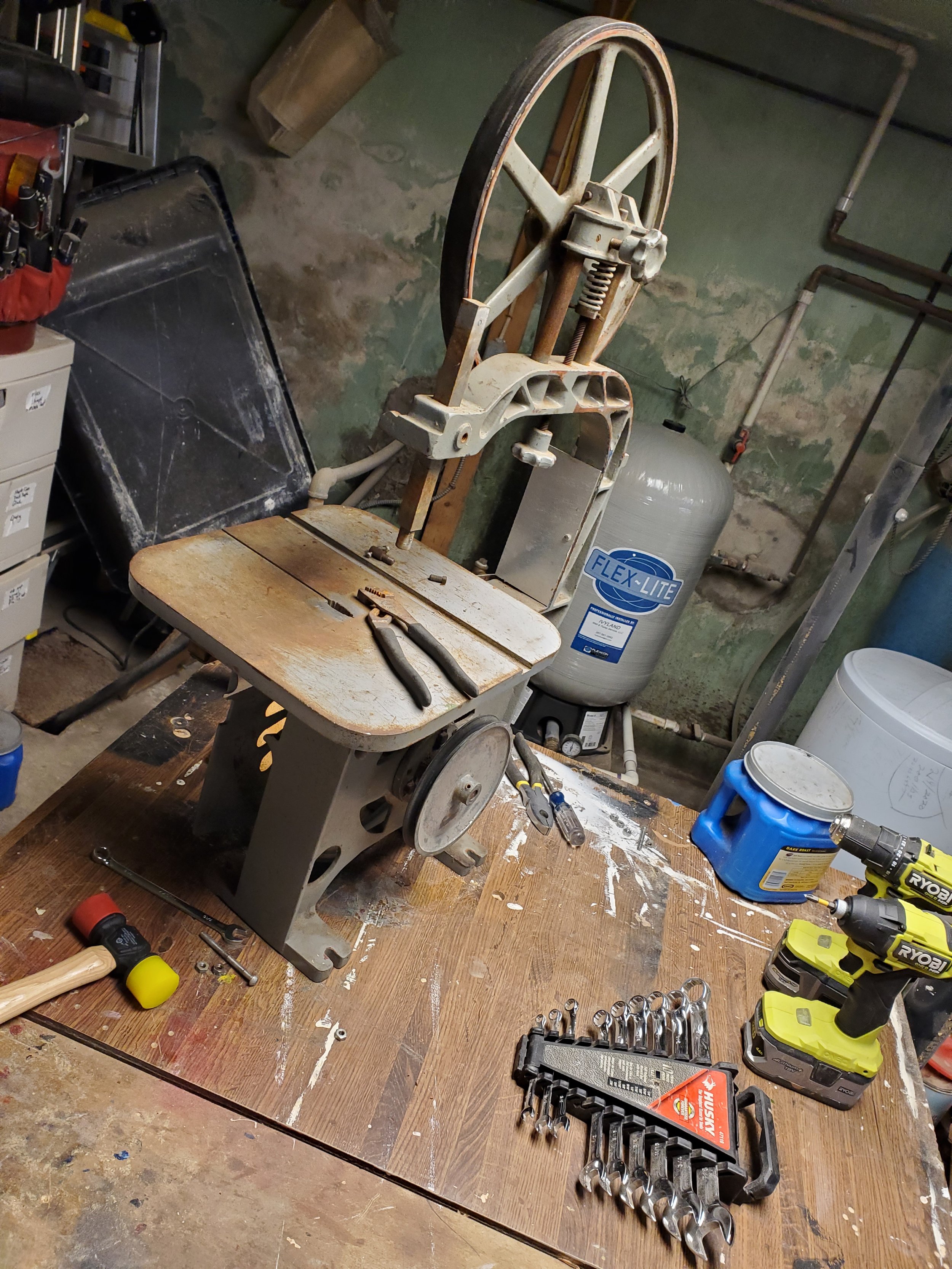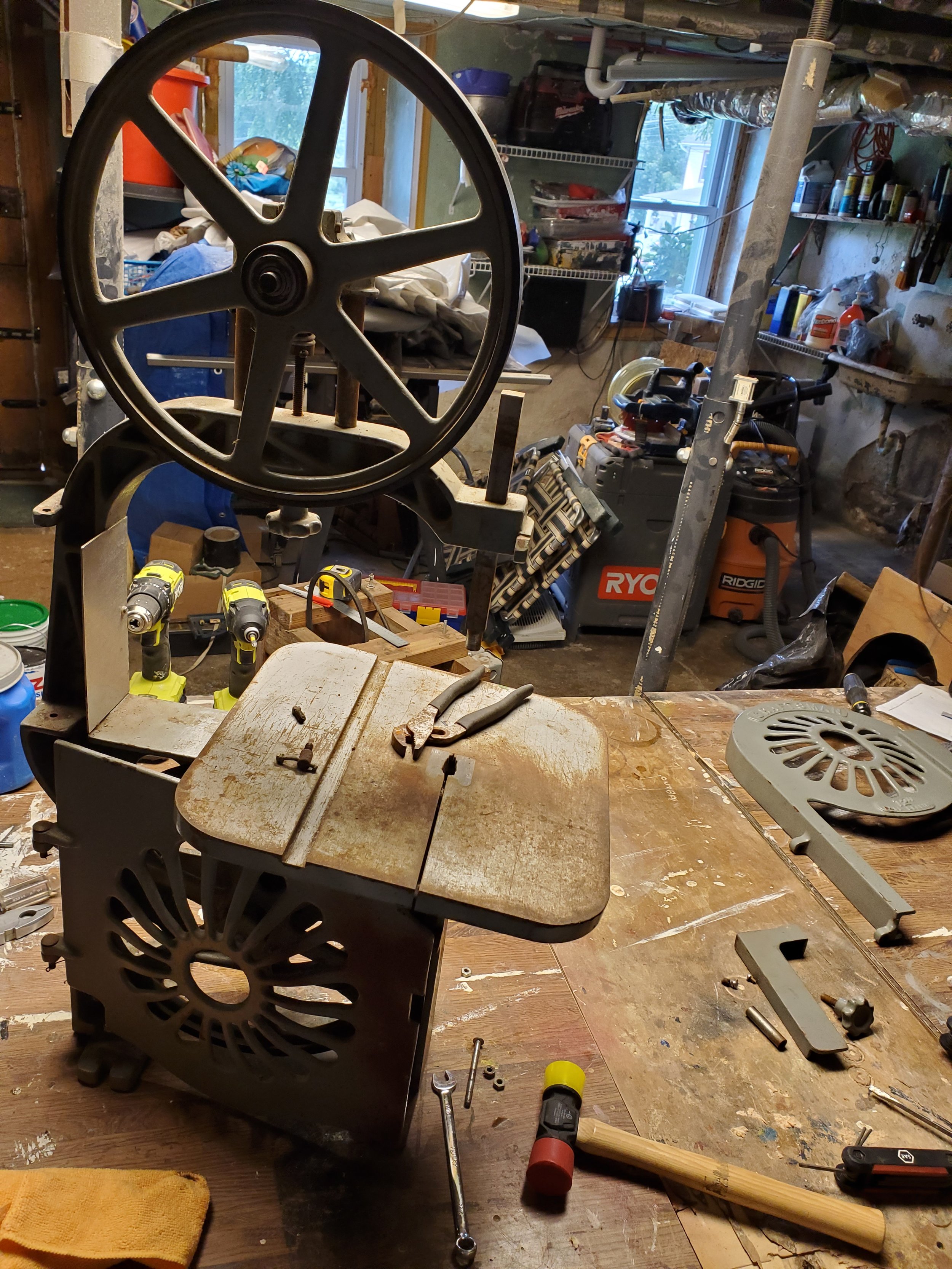
Bandsaw Restoration
Like many of my more random projects, this one started at a garage sale...and I was only planning on buying something if I needed it.
I walked out the door with a sixty pound bandsaw.


I paid $1 a pound and I thought $1 a year since it was made. Though I made out on that side because it turned out to be from the 1940's and I paid $60 for it.
Now was it working? No. Was it pretty? Also no. Was I going to spend several days of my life changing that? You bet your ass.
First off was the color. It was a dull grey you see here with chips flaking off it every time someone walked on the same floor as it. I tried to strip it, but the paint they used to use is quite a bit more adhesive than the stuff we use now. It loosened it slightly which meant that all I could do was take a wire wheel and an angle grinder and return it to bare metal.

After it was bare metal, it got hit with a coat of primer and two coats of engine enamel. I picked blue because I wanted a more vintage machinery look, but the old ford blue was too aggressive for a shop in a basement. We are adhering to our dingy roots in this house.
Fixing the motor was one of those things that either worked or required it to be rewound which I definitely didn’t have the money for. I took a risk and opened the whole thing up. It took a second, but I managed to solder extensions onto the leads to repair the corrosion. I must have used a whole can of brake cleaner to get it anywhere close to clean.


After repacking the bearings with grease and doing some fine adjustments, we were ready for assembly. And boy do the wheels glide now. I left the table unfinished so the work would not bind to it, but there is some chipping left from previous use that needs to be cleaned up.
All in all, not a bad way to spend several days and several wire wheels. The enamel dried very hard to the touch and is as close to powder coated as I'm going to get without a full-sized oven.

